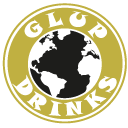WATER
Bottled water
Bottled water is bottled drinking water in individual bottles consumer and retail or higher. Water can be glacial water, spring water, well water, purified water or just water from the public water supply (tap water). Many countries, especially developed countries, regulate the quality of bottled water through government standards, typically used to ensure that water quality is safe and labels accurately reflect the content of the bottle. In many developing countries, however, such standards are variable and are often less stringent than those of developed nations.
The Council of Defense of the Natural Sources, Sierra Club and the World Wide Fund for Nature have stressed the importance of consuming less bottled water, and there have been several campaigns against bottled water. Many of these campaigns claim that bottled water is no better than tap water. In addition, waste is generated: as Corporate Accountability International organizations say millions of plastic bottles end up in landfills.
Supporters of bottled water do not see the product as an alternative to municipal water, but see it as a healthy alternative to soft drinks can be purchased at restaurants, convenience stores and vending machines. The bottled water industry indicates that bottles PET (polyethylene terephthalate) only account for 0.33% of wasted water in the United States.
Although often no difference can be seen, experts professional tasters (Sommelier) are able to distinguish these small variations from one water to another. For example, a lighter or water result heavier know more or less minerals and iron, etc. A normal person, if you pay attention to when sip water, you will also notice those little insights.
Production of bottled water costs between 0.25 and $ 2 per bottle. According to Bottledwaterblues.com, 90% of this cost is to make the bottle, label and caps.
Source: Wikipedia.
